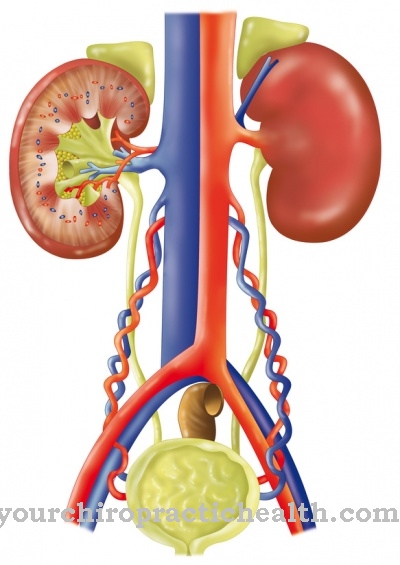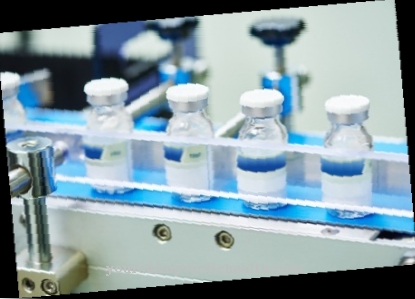At Anthracyclines is a group of compounds that have been isolated from bacteria and are used as cytostatics. Indications for the resulting active ingredients mitoxantrone, epirubicin, idarubicin and daunorubicin are leukemia and other carcinogenic diseases. The drugs target tumor cells via processes of intercalation and prevent their division.
What are anthracyclines?
Anthracyclines are a group of antibiotic compounds. The active ingredients were isolated from the bacterial genus Streptomyces and are used as cytostatics in chemotherapy. Especially the species Streptomyces coeruleorubidus and Streptomyces peuceticus snythetize the active ingredients. The mechanisms of action of the isolated drugs are varied. In particular, the active ingredients are directed against cells with a high division rate.
All representatives from the group of anthracyclines are aromatic hydrocarbon molecules. These are cyclic and planar hydrocarbons with an aromatic system.
Anthracyclines are also called Anthracycline antibiotics designated. In addition to idarubicin, daunorubicin and doxorubicin, mitoxantrone and epirubicin are among the best-known representatives of this group of active ingredients.
Pharmacological effect
One of the most important mechanisms of action of anthracyclines is intercalation. The reversible incorporation of individual ions, atoms or molecules in chemical compounds is known as such. The molecular structure of the stored particles hardly changes as a result of the storage. Inorganic chemistry speaks of intercalation when a wide variety of atoms, ions and smaller molecules are embedded between the crystal lattice planes of the layer crystals, for example when alkali metals are embedded in graphite crystal lattices.
The biochemical definition of the term is based on this definition of inorganic chemistry. In relation to DNA, processes of intercalation are always mentioned when individual molecules find their way into the double-helix DNA strand between neighboring base pairs. Such intercalation disrupts the replication and transcription of the DNA. Grid mutations occur during the replication process. For this reason, the intercalation is ascribed a mutagenic effect.
Protein biosynthesis processes are also disturbed by intercalation. For the affected cells, this means cell death. Anthracyclines also carry the enzyme topoisomerase II. This enzyme loosens the helical turns of double-stranded DNA strands and thus changes the spatial structure of the DNA double helix.
From a biochemical point of view, topoisomerase II temporarily splits both strands of DNA with the consumption of ATP. The resulting gap between the strands is used as a guide hole and takes up another section of the double helix.
In addition to intercalation and enzyme binding, anthracyclines are able to form free radicals. In this way, they create double-strand breaks within the tumor DNA. Their active ingredients also increase the permeability of the tumor cell membrane and in this way kill the cells.
Medical application & use
All anthracyclines are directed against the proliferation or spread of malignant masses in different ways. Malignant tumors invasively grow into the surrounding tissue in order to destroy it. From a certain point in time they sow metastases via the blood and lymphatic systems. Despite medical advances, malignant cancer is still one of the most threatening diseases of the 21st century.
Due to their anti-proliferative mechanisms of action, anthacyclines are used as cytostatics in malignant cancer. The main mechanism of action they use is the intercalation of tumor DNA, which blocks the protein synthesis of the cells and thus condemns them to die.
The indication for the administration of daunorubicin arises, for example, with lymphatic or myeloid leukemia in children, adolescents and adults.
In most cases, daunorubicin is given together with other cytostatics and, especially in acute lymphatic leukemia, is an introductory agent within the chemotherapeutic induction phase.
Idarubicin, in turn, is used in combination therapy for leukemia. Older patients with acute myeloid leukemia in particular receive this active ingredient. As a rule, there is no pre-treatment before administration. However, the cytostatic agent is not suitable for palliative therapy.
Mitoxantrom is not only used for leukemia, but also for breast cancer, non-Hodgkin lymphoma and prostate cancer. It is also used for escalation therapy for patients with multiple sclerosis. Epirubicin is also used for breast cancer and non-Hodgkin lymphoma. Further indications are sarcomas and gastric carcinomas.
Risks & side effects
The side effects of anthracyclines depend on the active ingredient. Daunorubicin can promote leukopenia, thrombopenia and anemia. In addition, bleeding, infections due to immunological weakening, hair loss or angina pectoris sometimes occur. The cardiovascular system can develop hypertension, cardiac arrhythmia, myocarditis, endocarditis, heart failure, and heart muscle damage.
In addition, pericardial effusions, pulmonary edema and gastrointestinal complaints are common side effects. In addition to nausea, vomiting, diarrhea or abdominal pain can occur as the mucous membrane is attacked.
Doxorubicin shows similar side effects and, like daunorubicin, is associated primarily with bone marrow depression and cardiotoxicity. With mitoxantrone, in addition to the side effects mentioned, dizziness, discoloration of the urine and sclera, and skin necrosis are common. In individual cases, the drug also triggers leukemia.
Due to the manifold side effects and the threat of organ damage, there are innumerable contraindications to the administration of anthracyclines. In the case of existing heart failure or cardiomyopathy, the administration of the active ingredients is hardly justifiable due to the expected cardiotoxicity.
In addition, serious infections are usually a contraindication. Anthracyclines dampen the body's immune system, so that existing infections can cause life-threatening sepsis (blood poisoning).
Idarubicin is also not suitable for patients with bleeding tendencies, renal insufficiency or liver insufficiency. Basically, risks and benefits must be carefully weighed against each other.












.jpg)



.jpg)










.jpg)
